

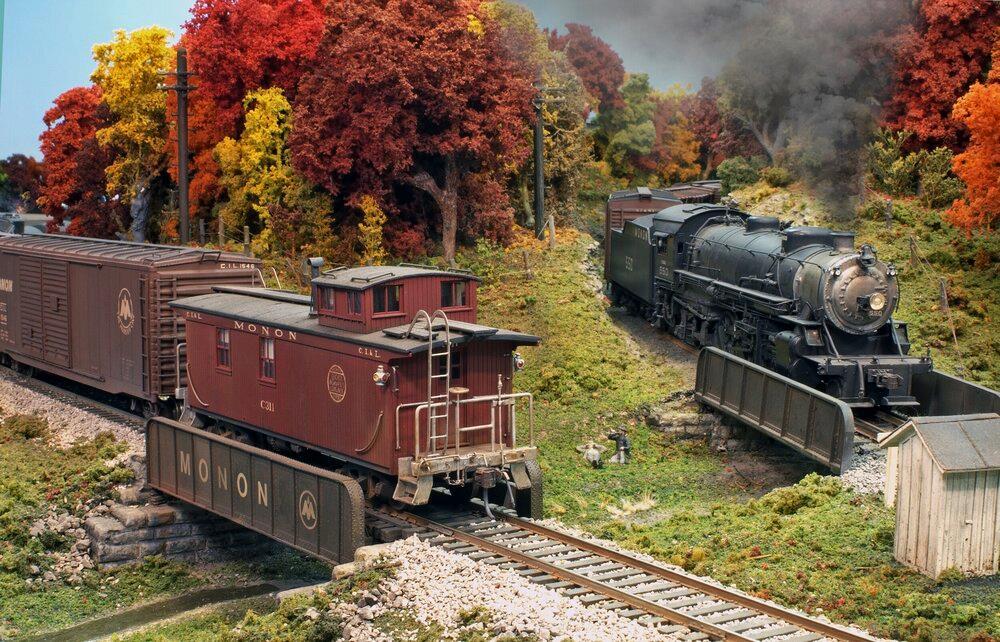
Newsletter of the FEBRUARY 2023 PORT ELIZABETH MODEL RAILROAD CLUB Every Gauge Welcome! Roger Nulton’s Monon RR (S) IN THIS ISSUE: PEMRC Diary – Committee – Annual General Meeting - Wireless Operation(s) HORNBY TV Series 2 - Flying Scotsman jubilee - Market Place - Model Railway Videos The Small Big Boy 1309 – Parts of a Loco - Third Life of J611 – Cabooses Revered How Steam Loco’s Generate Electricity - SAR Railcar - Modellers Guide to Photography Viessmann Car Motion - Wang Wei


Let’s have our own local PEMRC Model Railway Photo of the Year Contest! The only rule is that the submitted photograph must have been taken and edited by you. The subject of the image is model railway and we could have two categories: - Images of your own layout/diorama. - Someone else’s and/or public layout. Closing date is 31 January 2023. Submit your digital image as JPG image via email to: pemrailroadclub@gmail.com with PHOTO COMPETITION in the header. You can submit up to 2 images in each category. We could possibly produce our own club calendar with the submitted images Date Time PEMRC CALENDAR Detail Tue 31 Jan 2023 23:59 PEMRC Model Railway Photo of the Year Contest closing today Sat 4 FEB 2023 10:00 PEMRC ANNUAL GENERAL MEETING at: Mike Parsons, 18 Mowbray St Newton Park Sun 5 Feb 2023 9 - 13 PEMLS Public running day P E Model Locomotive Society Londt Park, Sunridge Park Sat 11 Feb 2023 9:00 PEMRC general meeting at: Mike Parsons, 18 Mowbray St Newton Park Sun 5 March 2023 9 - 13 PEMLS Public running day P E Model Locomotive Society Londt Park, Sunridge Park Sat 11 March 2023 9:00 PEMRC general meeting at: Mike Parsons, 18 Mowbray St Newton Park Sat 18 March 2023 14:30 PEMRC Layout visit at: Mike Smout, 5 Cheshire Village, Gomery Ave. Summerstrand 082 8011347
Chairman: Mike Smout ma.smout@mweb.co.za
082 8011347
Treasurer: Attie Terblanche terblalc@telkomsa.net 082 532 3670
Clubhouse: JP Kruger juanpierrekruger@gmail.com 082 3212233
Editor: Roel van Oudheusden pemrailroadclub@gmail.com 082 739 7679
Workshop’ & Shop:Mike van Zyl carpencab@gmail.com
Layout visits: GrahamChapman chapman22@telkomsa.net
073 374 3280
072 103 4625
Library: Pierre vanLoggerenberg pierrevanloggerenberg3@gmail.com 084 802 3831
Subscriptions for 2022are R500 p.a. for full membership and R100 p.a. for Country members.
EFT is preferred, but theTreasurer may acceptcash.
Bank account: FNB Walmer Park, branch code 211417, Account no. 62386122057
The 15th Annual General Meeting of the Port Elizabeth Model Railroad Club will be held at 18 Mowbray Street, Newton Park (Mike Parson’s garage) at 10:00 on Saturday 4 February 2023.
Current COMMITTEE:
15th ANNUAL GENERAL MEETING 2023
1.
2.
3.
4. Matters
5. Chairman’s
6. Treasurers
7. Shop
8. Club House 9 Election of Committee members for 2023 10. Subscriptions for 2023 11. Layout
12.
AGENDA
Opening and Welcome
Present (apologies)
Minutes of the AGM 22 January 2022
arising
Report
Report
Report
visits for 2023
General13. Closure
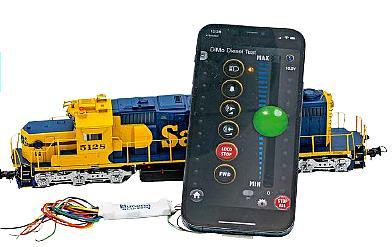




OPERATION
The
is made by SoundTraxx
“The BLU-2200 is a universal-style sound decoder that can be operated in three different ways: DC, DCC and Wireless mode. Using the Blunami app (iOS versions 8 or later), you can operate your locomotive with incredible ease of use. This decoder is suitable for use in both HO and small S-scale models. The Blunami App eleminates the need for a commandstation or CVs when running your trains. All you need is the decoder and track power to access all of the amazing SoundTraxx features that you know and love!” View their product video here: https://youtu.be/oaKojomTPos And read more on their website here: https://soundtraxx.com/blunami Click on the hyperlink imbedded in this image to download the App (not for Android at present)
WIRELESS
Already in September we reported on the release of the Blunami decoder which is instructed via Blue Tooth and last month Hornby released their wireless controller.
Blunami
in Durango, Colorado, USA
This is a product by rail4you.ch based in Switzerland.

What is important, however, is the compatibility of Clever Train Control with the control systems on the market. A smooth transition or a side by side without "ifs and buts" is possible at any time!
A CTC system consists of the following components:
Smartphone, tablet, PC or other devices running Windows, Android, Linux, Apple, etc. (several of these devices are possible).
CTC App, to control the system with automatic configurationCTC App, to control the system with automatic configuration

CTC Router
Power pack for feeding the system (industrial power pack, 18-25 VDC/AC stab/5-10 amps) or the existing power supply of the system
Any number of CTC decoders for traction vehicles (also with sound and corresponding additional functions such as lights, coupling, pantograph, etc.)

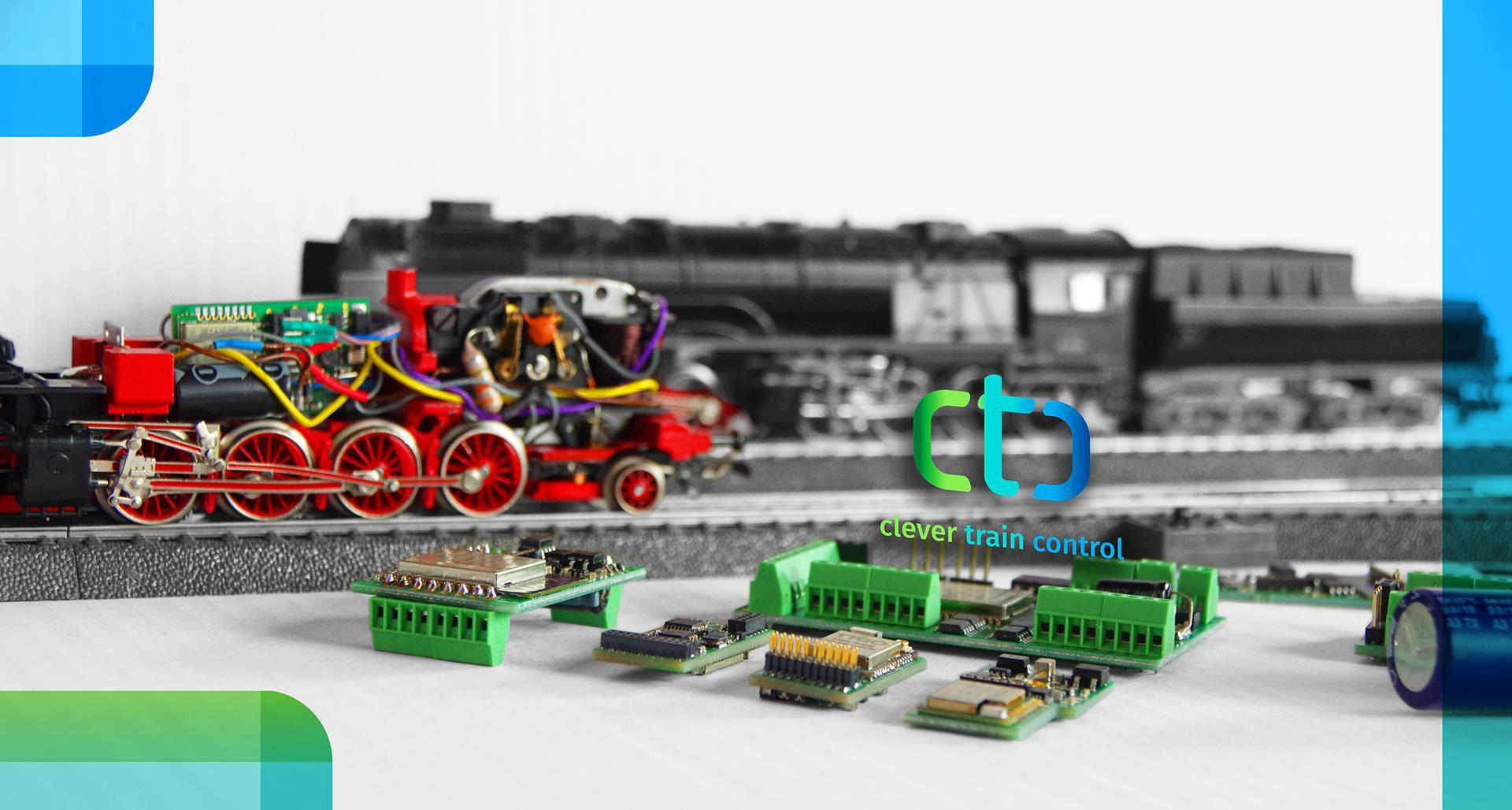
Variety of CTC decoders for turnouts ("clack-clack" with magnets, motors, servos), signals, impulses and switching functions, etc.
any number of CTC position modules (what, when, where). A really clever way of functioning, which is based on the concept of the ETCS and without any rail interruption! https://www.youtube.com/channel/UCe-Z18pJ6UXvrqC_AJvaJGg
Queries/questions: Just grab the keyboard and send us an email to: info@rail4you.ch
“
The digitization of a Model Railway layout has a completely different face from today!”
TCS UWT-50 'Universal WiFI Throttle'
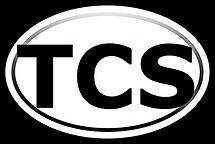
The UWT-50 Universal WiFi Throttle is the new standard in utility WiFi control for model railroads. This throttle brings a new level of ergonomic comfort and operational convenience to a smaller, more affordable package than the UWT-100. Instead of spending time with your head in a manual trying to understand your throttle, the intuitive interface of the UWT-50 allows you to focus on the important things - operating and enjoying your trains!
Engineered to work with most current DCC systems, and increase adoption and use of LCC, this throttle relies on the robust and universal standard of WiFi communication and leaves outdated control systems behind. The UWT-50 can be conveniently updated from the comfort of your own home, meaning you'll always have access to the newest features and your handheld won't quickly pass out of date. We are confident that the UWT-50 will quickly become your favorite throttle to use!
UWT-50 List of Features:

Large, Full-text Screen
1.42" x 0.92" LCD screen with white backlight. Brightness is entirely adjustable for a variety of operating conditions.
Programmable Buttons
Two buttons on the face of the throttle, as well as two multi-position switches on the side (8 total) can be reassigned to control many functions. Examples include dynamic braking, manual notching, and more! Higher-numbered functions are now a simple button press or switch flick away!
Battery Power
The UWT-50 is powered by two double a (AA) batteries, and support multiple chemistries including recharge-able, such as Alkaline, NiMH, LiPo, NiCd, and more! An easily-accessible battery compartment allows for quick, on-the-fly replacements so you're never stuck in a sticky situation waiting for your throttle to charge! (The yard master won't be happy to hear about that!)
The UWT-50 lets you focus on what matters - running trains!
Multiple Connection Modes
You can connect to any DCC system using the WiThrottle protocol or a system-specific WiFi device, or communicate directly with your LCC network in LCC mode.
In-Throttle Consisting
Consisting doesn’t have to be difficult, intimidating, or complicated. The UWT50 features a simple consisting interface where users can make, modify, and break up consists in mere seconds.
Yard Mode
Yard Mode is an innovative, TCS exclusive feature designed for switching operations and control. Perfect for spicing up repetitive yard moves!
Full-Text Menus
Menus present all options in full words and phrases. No guess work or manuals needed!
Help Text
Use the [?] button on the keypad in any menu to access help text for that menu item. The throttle will call up a relevant part of the manual or simple description of the selected operation. Help is always one button press away!

Easily Update-able Update throttle software and add new features to your handheld from the comfort of your own home.
Flashlight
The UWT-50 unit comes equipped with two bright white LED's that can be activated at any timehandy for finding those dropped screws and lost detail parts, decoupling during nighttime operations, and ventures under dark, cavernous benchwork!
TCS manufacture of the highest quality DCC Decoders and Control Systems for Model Railroads in Pennsylvania USA. Read and see more here: https://www.tcsdcc.com/uwt-50 https://www.youtube.com/@TCSDCC/videos
Layout Command Control - Model Railroad Communications Technology of the Future!
LCC stands for “Layout Command Control.”

LCC is first and foremost a protocol - a way that systems on your layout can talk to each-other and share information.
LCC can be used for controlling the functions on your layout such as block detection, signals systems and CTC/PTC, structure lighting, and much more!
Adding LCC to your layout relieves much of the strain on your DCC system by allowing it to focus exclusively on operating your locomotives while LCC handles the rest.
The LoDi-Con, our new hand controller from Lokstoredigital, Germany, info@lokstoredigital.de


Equipped with a high-quality touch display and a handy rotary control, the LoDi-Con is unbeatable in its handling.
It can connect to the complete Lodi system and can communicate with a Z21, as well as a CS2 and CS3.
The integrated dual WLAN antenna enables very good reception and can therefore also be used outdoors without any problems. The LoDi-Con A has a built-in rechargeable battery that offers troublefree operation under continuous load of up to 10 hours. Since the LoDi-Con has WLAN and it can be easily integrated into your home network or even communicate directly with control centers if they have an integrated WLAN module, the possibilities for integrating it are great. You can be connected to up to five panels at the same time. There are already some common protocols available and. we work daily to support more manufacturers. So far the following devices can be connected to the LoDi-Con: LoDi Rector LoDi
The LoDi-Con can already communicate with a large number of model railway control software products. We continue to work closely with the manufacturers to be able to implement even more functionality in the LoDi-Con.


LoDi-Con A or B
Shift Commander LoDi S88 Commander z21 and all control panels that support the Z21 protocol Marklin CS2/3 XpressNet ESU ECoS WiThrottle (in preparation) Loconet (in preparation)
A MODEL WORLD STEAMS INTO YESTERDAY CHANNEL IN JANUARY
Hornby Development and Marketing Director

Simon Kohler has had a radical idea, using the iconic locomotive Flying Scotsman as the spearhead of a brand new range, two thirds the size of the ubiquitous Double-O. This Table Top (TT) scale hasn’t been produced in the UK for over 50 years and even for seasoned designers, poses significant engineering challenges. Everything must be scaled down 120 times from real life, rendering some features almost invisible to the naked eye, or too small to even mould. There’s also a huge task on minuscule proportions for repairs “Magician” Jon as he performs the fiddliest of fixes on two tiny Rocket locomotive models. Plus enthusiast Kathy Millatt is shrinking a Welsh slate mine down to create a new micro layout, contending with buildings that are too big, locos that don’t work and the bane of her life, a hot glue gun.

In the new series, musician and TV presenter Jools Holland (episode 2) allows cameras into his Kent home to marvel at his incredible train layout. He’s played to millions on stage but few know of Jools’ passion for model making. With a love of architecture, Jools has collected models and kits of curious buildings for the past 45 years. Elsewhere in the series, music producer Pete Waterman (episode 4) creates his most ambitious layout to date - recreating the section of West Coast Mainline where he spent his Saturdays as a child. Each programme follows Hornby’s design process from drawing board to perfect mini replica, charting the ups and downs of the journey as Hornby’s team of dedicated designers attempt to get the all-important detail spot on, whether it’s perfecting the sound of a luxury 1940s steam loco or the shape of a rally racing car. Cameras also capture some of Britain’s best model layout builders, creating miniature masterpieces in lofts and sheds across the land. These dedicated enthusiasts spend hundreds of hours building perfect replicas of towns, villages and landscapes for their locos to travel through, everything from wintry wonderlands to bomb damaged city scapes.
Episode 1 of Series 2 aires on 16 January 2023 at 8pm on Yesterday Channel. You can catch-up on UKTV Play here!

The first series is available on demand on UKTV Play now.

CELEBRATING 100 YEARS OF FLYING SCOTSMAN


Hello and welcome to this special edition of the Hornby blog, all about the centenary celebrations of a very special locomotive. Flying Scotsman left Doncaster Works in February 1923, and to celebrate the milestone birthday it reaches next year Hornby have teamed up with the National Railway Museum as the lead sponsor of events during this centenary year. In this blog, we will look at some of the models we are creating for this very special occasion.
Hornby has produced literally countless models of Flying Scotsman over the years. One of the first of these was the tinplate 0 gauge model complete with its 4-4-2 wheel configuration, a limitation of the time as the model used the same chassis and mechanism from the standard 4 wheel tank engine. Since then, a model has appeared with every number the locomotive wore and every livery, LNER Apple Green, Wartime Black, BR Blue and BR Green. Hornby has produced literally countless models of Flying
Scotsman over the years. One of the first of these was the tinplate 0 gauge model complete with its 44-2 wheel configuration, a limitation of the time as the model used the same chassis and mechanism from the standard 4 wheel tank engine. Since then, a model has appeared with every number the locomotive wore and every livery, LNER Apple Green, Wartime Black, BR Blue and BR Green.
Image Courtesy of the NRM
As well as being a mainstay of the Hornby range for time immemorial, Flying Scotsman has been the introduction for many into the hobby of modelling with many train sets featuring the iconic locomotive created and sold as well as a Railroad version of the model, perhaps the largest selling model in our introductory range. in preparation for the centenary celebrations in 2023, Hornby have announced a suite of models for this historic occasion. These are not re-releases but are instead bespoke models to be released under the Hornby Dublo branding with the specifications that you would come to expect from the name. Each Hornby Dublo Flying Scotsman model is fitted with a diecast locomotive body, enhancing not just the weight and therefore pulling power but the quality of the decoration applied. The finish achieved on Hornby Dublo models is much closer to that of a full size locomotive than can be achieved on plastic. As well as this enhanced decoration, the models are 8 pin DCC ready allowing for fine control on digital layouts. Also featuring on these models is a new style of locomotive to tender connection, allowing the two to be easily connected and disconnected while still allowing electrical connection and functionality between the locomotive and tender.
The medley of models presented cover all eras of Flying Scotsman’s career, presented here in chronological order and covering:







in 1922 as the then un-named 1472
Outshopping
war re-numbered
The
named and renumbered 4472 as at the British Empire Exhibition 1923 The post
103 in LNER colours
The locomotive as restored under the ownership of Alan Pegler, with A3 boiler and banjo dome but in LNER colours and lettering, a streamlined corridor tender and red nameplates
The locomotive in its iconic U.S.A Tour guise with modifications including a headlight, bell, cow-catcher and second tender. Flying Scotsman had its cow-catcher painted in two different colours while it was in the U.S, with the red colour being painted over in black during a layover in St. Louis, Missouri between June 30th and July 6th 1970, making this model a pre-St. Louis version. The cow-catcher, originally red to compliment the buffer beam it was attached to, was painted black to make it less conspicuous helping it to blend
The locomotive as it will appear in its centenary year of 2023 as well as how it would have looked during the late BR era, in late BR colours with German Style smoke deflectors in.












Please contact Roel at 082 739 7679 with your offer: MARKET PLACE








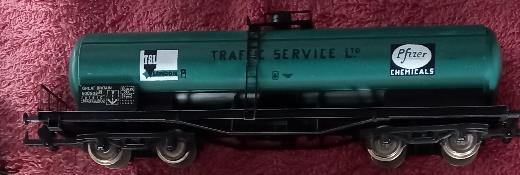


















Contact Roel at 082 739 7679
MODEL RAILWAY VIDEOS of INTEREST

Superklein Die Miniaturmeisterschaft


In "Superklein - The Miniature Championship" moderator Wigald Boning is looking for Germany's best model builders. Masterful miniature worlds are created in challenging challenges that combine craftsmanship with narrative creativity. Gerrit and Frederik Braun from the famous Miniatur Wunderland Hamburg judge who has the edge here. The expert jury knows what they are talking about. Tiny has never been so great! Starts Sunday 8 January at 15:35 SAST on RTL Germany. Unfortunately it cannot be receied live in SA but we will monitor results and keep you informed. Perhaps Frank could also update us from time to time... Here is a first exclusive interview with the two jurors. https://youtu.be/W2-zplE6uOw Set the subtitles to English!
TODAY at 2:35 p.m., RTL will air what is probably the most spectacular show ever on the subject of model building. ���� Gerrit and Frederik are the judges who, together with Wigald Boning, lead through the show and look for the most talented miniature artist:in Germany. The show gets more exciting from episode to episode and hopefully becomes a warm companion through this winter.
TheMiniaturWunderlandistheGuinnessWorldRecordcertifiedlargestmodelrailwaylayoutinthe worldandHamburg'sNo.1touristattraction.Morethan20millionvisitorsfromallovertheworldhave alreadyviewedasuperlativeminiatureworldinHamburg'sSpeicherstadtwarehousedistrict.Aunique miniaturemasterpiecehasbeencreatedonanareaof1,545m²inover1,000,000workinghours-and itisstillgrowing.Itimpressesnotonlywithitssophisticatedtechnologybutaboveallwithitswealthof detail. More than 289,000 figures have been lovingly staged, cars and ships move through the landscapes,andevenairplanestakeoffeveryminuteatKnuffingenAirport.TheWunderlandisa breathtakingminiaturecosmosthatcannotbeseenanywhereelseintheworld.Andthiscosmos continuestogrow.WiththeopeningofRiodeJaneiro,thefirst46m²ofthelargeSouthAmericaworld havealreadybeeninaugurated.Inthefollowingyears,Patagonia,therainforest,partsofCentral AmericaandtheCaribbeanwillfollow.ButconstructionworkisalsocontinuingontheEuropean continent.ThedwarfstateofMonacoandidyllicProvencearealreadyunderconstructionandare scheduledtoopeninwinter2022/2023.





© Cody Griznov PARTS of a 2-8-0 LOCOMOTIVE Driver’s/engineer’s side Fireman’s side
This loco already featured in the June 2022 issue but the magnificent images in the 03/2022 issue of Eisenbahn Romantik had to be shared.

THE SMALL BIG BOY 1309 of the WESTERN MARYLAND SCENIC RAILROAD

 Chesapeake & Ohio MALLET 1309 – a small Big Boy 2-6-6-2 with impressing figures: 30 metres long; weighing aout 300 tonnes (Loc + tender); 28 tonnes drive axle weight ; 16 tonnes coal and 45000 litre water in tender.
Chesapeake & Ohio MALLET 1309 – a small Big Boy 2-6-6-2 with impressing figures: 30 metres long; weighing aout 300 tonnes (Loc + tender); 28 tonnes drive axle weight ; 16 tonnes coal and 45000 litre water in tender.

Evening mood in the historic
Cumberland train station: Mallet 1309 is standing at the platform with freight cars. Perfect steam train atmosphere of the immediate post war period.

 ©Walter Scriptunas II – SWR-ER 03-22
©Walter Scriptunas II – SWR-ER 03-22
J611 in THIRD LIFE
The Tuscan red, gold, and locomotives were powerful, developing more than 5,100 hp, and they could sprint at speeds up to 110 mph. Sadly, the coming of diesel locomotives in the late 1950s meant the end for N&W steam and the Class J locomotives. The railroad retired No. 611 in 1959 and donated it to a city park in 1963. J611 is the only survior of this class locomotive. Several of the J Class completed more than 3 million miles in service. J611 achieved speeds of more than 177km/h whilst towing 15 passenger coaches already in the 1940’s. J611 was out of service for 23 years before the first restoration was started in 1982. This second life ended in 1994 when the firebox went cold for another 20 years. The last restoration (2013-2015) gave her her current third life and since then she impresses young and old!
Norfolk and Western 611, also known as the "Spirit of Roanoke" and the "Queen of Steam", is a Norfolk and Western (N&W) class J 4-8-4 "Northern" streamlined steam locomotive built in May 1950 by the N&W's East End Shops in Roanoke, Virginia. It was one of the last mainline passenger steam locomotives built in the United States and represents the pinnacle of steam locomotive technology. No. 611 was assigned to haul the N&W's premier passenger trains between Norfolk, Virginia, and Cincinnati, Ohio; and to ferry the Southern Railway's (SOU) passenger trains between Lynchburg, Virginia, and Bristol, Tennessee.
 © Mitch Goldman 2015
© Mitch Goldman 2015
In 1956, it was involved in an accident and was subsequently repaired until it was retired from revenue service and served as a steam generator at the East End Shops in 1959. Due to its excellent condition, the No. 611 locomotive was donated to the Virginia Museum of Transportation (VMT), where it sat on display as the sole survivor of the class J locomotives.
In 1982, No. 611 was restored to operation by the Norfolk Southern Railway (NS), N&W's successor. It became the main line star of the NS steam program, pulling excursion trains throughout the eastern United States. Former N&W president and NS chairman Robert B. Claytor, who was responsible for the restoration of No. 611, signifies the locomotive as Roanoke Born, Roanoke Bred, and Roanoke Proud and the finest steam passenger engine ever built. In 1984, No. 611 was dedicated as a National Historic Mechanical Engineering Landmark by the American Society of Mechanical Engineers (ASME). It was often invoked as an icon of Roanoke and its railroading history. In late 1994, when liability insurance costs led NS to end its steam program, the locomotive was again retired and moved back to the VMT.
In early 2013, the VMT helped raise $3.5 million to restore No. 611 to operating condition once again. After a year of restoration work at the North Carolina Transportation Museum in Spencer, North Carolina, the locomotive returned to excursion service in mid-2015. In 2017, the Virginia General Assembly designated the 611 as the official state steam locomotive of Virginia. In 2019, 2021, and 2022, No. 611 visited the Strasburg Rail Road (SRC) in Strasburg, Pennsylvania, running short tourist excursion trains in the Pennsylvania Dutch countryside.
 Norfolk and Western 4-8-4 # 611 at Ronks, Pennsylvania, USA. Taken on 8 Oct 2019 at 1/8 of a second for the pan, the rods on the Queen of Steam become nothing more than a blur. Probably my slowest pan speed ever. © Sean Mathews
Norfolk and Western 4-8-4 # 611 at Ronks, Pennsylvania, USA. Taken on 8 Oct 2019 at 1/8 of a second for the pan, the rods on the Queen of Steam become nothing more than a blur. Probably my slowest pan speed ever. © Sean Mathews





A drawing design of the N&W class J locomotive Norfolk & Western 611: Memories of the Mainline https://youtu.be/YxykZOsFWqs Norfolk & Western Class J 611 Visits Strasburg A Reunion of Steam Day 1 Yard Action with N&W 475 https://youtu.be/p3jMcuHasHY Review: Bachmann Class J #611 w/Sound value HO Scale https://youtu.be/VLqSSHppzVk
It’s been roughly 40 years since cabooses were a regular occurrence on the end of any mainline train. Cabooses were a critical part of railroad operations, coordination, and logistics. What you might not realize however, is the significance of this small car and how technology has replaced the need for it over the years. Since the beginning of railroads in the 1830s, train crews would routinely work from one end of the train to another via roof walks and ladders. The caboose was always at the end. It was a sheltered area that allowed the crew to stay out of the elements when not immediately tending to their jobs on the train. As needs evolved and the design was refined, the caboose became the rolling office for the train conductor.
Union Pacific local LIC55 has a former Southern Pacific bay window caboose for use as a “switching platform” for a 3-mile backward move at Centralia, Wash. The caboose is used as a stable and safe platform for the crew to ride while the train backs up, as shown July 14, 2020 at Winlock, Wash.

5 Reasons Cabooses were revered:

1. Rolling office and dorm
Each caboose provided not only shelter for the crews but a place for documentation and paperwork to be completed by a trainman or conductor. A caboose carried marker lights that would show it as the end of a train while alerting other trains of its location. Some cabooses were adorned with bunks, a stove, and in some cases, a small bathroom.
CABOOSES REVERED by Robert W. Scott
2. Specifically assigned
Some railroads assigned cabooses to specific conductors and crews. Assigned crews would sometimes use the caboose to lay over between runs, as it would be set out and reserved for the crew to take back on a returning train. Those assigned to a particular crew would occasionally be personalized with pictures, posters, or cartoons on the wall, essentially making the caboose a “rolling” home away from home for these individuals.
3. Used as a toolbox
Each caboose was outfitted with various tools and equipment for use while on the line. This was in case of a mechanical breakdown or other issues while en route. A collection of basic tools and wrenches would be located inside a supply cabinet, as well as fuses, air hoses, and coupler knuckles. A red flag was always present to be used by a crewman of a stopped train. It was used to alert an approaching, unaware train that another train was stopped ahead.
4. Designed based on railroad
Cabooses were built and painted with different designs dictated by the purchasing railroad. Some chose a caboose with a high cupola that allowed the crews to be seated in the upper region of the caboose. This gave them good visibility when inspecting the train from the rear. Some railroads chose bay windowstyle cabooses with no upper-level area, while others chose “transfer” cabooses that provided more protection to the crew during movements between yards, rather than over-the-road trains.
5. More of a novelty
The main use for the caboose started to wane in the 1980s. Most mainline cabooses were not in use by the 1990s because of new technology and crew reductions. In some rare cases, a caboose will still be used as a “switching platform” that allows a safe place for crew members to ride while switching or riding cars for a long distance. However, their distribution across the U.S. and Canada is very limited, with some short lines or specialized work equipment still utilizing them.

If the plural of “goose” is “geese”, then is the plural of “caboose,” “cabeese?” Cabooses and brake vans come in all shapes and colors. No matter what era you model, they are sure to add color and interest to your layout. When next time you’re at an operating session and use the term “cabooses” instead of “cabeese,” you can say it with confidence, because Merriam-Webster Dictionary and Trains.com said so.


Make
As freight cars grew taller and wider in the 1960s, many roads purchased these modern cabooses featuring a cupola the same width as the roof for better forward visibility. Today, you'll still find them in work train service and as "shoving platforms" where frequent reverse movements are needed. Nicely detailed, each features the correct cupola with one of two window styles, underbody tool box as appropriate, thin profile, see-through running boards, finely molded end ladders, scale thickness end railings, Barber Swingmaster roller bearing trucks and more. Factory-finished in colorful BN, GN, NS, NP, IC and N&W schemes, each is available with two different numbers, and there's an Undecorated version for customizing. For the finishing touch, molded drill-starter points on the body make it easy to add grab irons from the Caboose Detail Kit (#910-201, available separately).

“CABOOSES”OR“CABEESE”?
HO freight operations safer with International Wide-Vision Cabooses from WalthersMainline!
HOW STEAM LOCOMOTIVES GENERATE ELECTRICITY by Carl Swanson

The warm glow of an incandescent headlight lights the way for Nevada Northern’s No. 92, built in 1909. Locomotives were equipped with electric lights long before most homes in the U.S., but how can a steam locomotive generate electric power? The answer? A steam-powered generator, mounted just behind the headlight on this engine.
As soon as trains began running at night railroads realized a light was needed for crews to see the tracks ahead and for people at grade crossings to be warned of the oncoming train. The first attempt at a headlight appeared in 1832 and involved a large wood bonfire burning in an iron cage on top of a flatcar pushed by the locomotive. A much better approach soon arrived, a metal box mounted high on the front of locomotive containing an oil lantern in front of a reflector.
In 1897, a dramatically improved headlight appeared featuring a powerful beam powered by electricity. This light was so superior that Congress passed a law in 1915 requiring all locomotives to be equipped with electric headlights.
But how can a steam engine produce electricity to run its lights?
The heart of the system is the steam turbine generator. Usually mounted along the top of a boiler, these ingenious devices use a powerful jet of steam from the boiler to spin a turbine wheel connected by driveshaft to a generator. Turbogenerators were made by several companies in the steam era, including Pyle-National, Sunbeam, and General Electric. A typical model, Sunbeam’s type RE-3, produced 500 watts at 32 volts at a turbine speed of 2,400 revolutions per minute enough to power the headlight, classification markers, number board lights, and the bulbs illuminating the instruments in the cab. By varying the amount of steam, more or less voltage is produced.
Suitably powerful incandescent lightbulbs proved too delicate for the jolting and vibration of train service, so arc lights were originally used. Arc lights produced near-blinding light, so much so that engineers were advised to shut off headlights when sitting in stations. The carbon rods in the arc lights were prone to breakage and lasted only eight or nine hours. Replacing them was just one more chore
on an already labor-intensive steam engine. In due time, more rugged lightbulbs were developed for headlights and the arc light faded into the past.


In operation, turbogenerators proved fairly trouble free. Since they are rotary devices, they avoid the wear and tear inherent in reciprocal (back and forth) mechanisms. Maintenance involved occasional cleaning, adjustment of the commutator and brushings, and the addition of a few tablespoons of lubricating oil.
This simplified illustration shows how steam enters at one side, strikes the vanes of the turbine wheel, spinning it at high speed. The steam is deflected by the curved vanes and escapes from the opposite side of the wheel.

The actual mechanism was a bit more complex, with steam being captured by a curving passage and redirected to pass across the turbine wheel a second time. An early instructional text, issued by Pyle-National, noted that the voltage is so low in these devices that “no shock can be felt when direct and intentional contact is made. One thing should be clearly understood, however, and that is, a watch should never be brought closer than 18 inches to the dynamo, as it is very apt to become magnetized, thus destroying its usefulness as a timekeeper until demagnetized.”
Nevada Northern No. 81’s turbogenerator is easily spotted thanks to its telltale escaping steam. The side of the device closest to the camera contains an electric generator. The far side contains a turbine wheel driven at very high speed by a jet of pressurized steam from the boiler. A drive shaft connects the two.The next time you’re near an operating steam locomotive, look along the top of the boiler. The turbogenerator can easily be spotted thanks to a thin, continuous cloud of escaping steam, an ingenious solution to a problem as old as railroading.

SAR RAILCAR
The South African Railways Clayton Railmotor of 1929 was a steam railmotor.

In 1929, the South African Railways acquired a single self-contained steam railmotor for low-volume passenger service. The vehicle was a vertical boilered steam locomotive with a passenger coach as an integral part of the locomotive itself. The vertical boiler of the engine was located to the rear of the front driving compartment and had an outer cylindrical shell and an inner firebox, with the middle portion of the firebox pressed into a square cross-section. The coal bunker and water tank were mounted on the power bogie and the bunker part was separate from the coach body to enable it to swivel with the power bogie. The engine unit had two cylinders with piston valves which drove a spur gear on the driving axle, while the two axles of the power bogie were connected with coupling rods. For bi-directional operation, the railmotor had a second driving cab at the rear end of the coach. The rear end of the railmotor rode on conventional passenger bogies. The coach had the capacity to seat 30 first class and 35 second class passengers in two compartments and it also had a baggage compartment immediately to the rear of the front driving cab and boiler. The vehicle was equipped with the old Johnston link-and-pin couplers instead of the new AAR knuckle couplers that were introduced in 1927. The reason was most likely that the commuter carriages in service at the time were all still equipped with the older couplers.The railmotor was initially placed in service on the Milnerton line for a brief period and often operated with a passenger carriage in tow. When this line was closed to regular traffic on 31 July 1930, the railmotor was transferred to the Cape Flats line. The railmotor fleet was reported as giving good results and accomplishing the objects of economical working and speedier and more comfortable travel compared to steam train services, since mixed trains on branch lines usually resulted in slower passenger service as a result of frequent stops to load or unload goods.The Clayton railmotor was later used on the Overberg line to Caledon. No more steam railmotors were acquired, however, and all subsequent railmotor models on the SAR were petrol-driven vehicles.
https://en.wikipedia.org/wiki/South_African_Clayton_Railmotor

A rare photograph of one of the standard SAR Watson*-designed rail motor-coaches departing from Port Shepstone station in the late 1920s. The 27 000 candela Port Shepstone lighthouse, in use since 1905, is seen in the background. Note the 2ft gauge track running alongside the South Coast Line on a separate formation.

According to the 1929 General Manager’s Annual Report, RM 8, a 150hp petrol rail motor-coach, built in the SAR’s Durban mechanical workshops, was originally placed in service on the CreightonDonnybrook section of the Cape-Natal-Line in October 1927. It was subsequently transferred to the South Coast Line for service between Umkomaas and Port Shepstone during April and November 1928. The service was so well patronized that a second motor-coach was placed in traffic from July to September. Another new motor-coach built in the SAR’s Durban mechanical workshops was pressed into service on the Umkomaas-Port Shepstone run in January 1929.
*AllenGriffithsWatson,SARChiefMechanicalEngineer1929-1936andAssistantGeneralManager(Technical) 1934-1936.

Railcar 23 at Port Alfred in 1939. It was probably based at the RMT siding in Grahamstown although we don't have solid evidence for this, but we do know from the contemporary WTBs that they worked a complicated diagram of which the main feature was a daily (SuX) departure from Port Alfred at 08:15.

On Saturdays there was an additional one at 17:30 - the one in this incredibly rare photo unearthed and indexed by the DRISA crew. The following information has been gleaned from Les's Photo Journal No 9: "[Railmotor 23] represents the standard design of railcar which evolved on the SAR in the late 1920s to early 1930s. 16 or 17 of these 37 foot long vehicles were eventually placed in service. They were powered by two Hudson 6cylinder engines which could be used independently or in unison to propel the vehicle." The railcars were quick, cheaper than a train and liked by the public so we don't know why they were discontinued on this line c 1940.
Dream trains
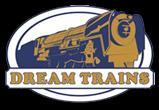

No shipping costs for combined orders of R2000 or more. Shop online and fill your cart, even if less than R2000, then contact PEMRC Mike van Zyl, to combine your order with fellow club members and all will save.

As in reality, you are now able to control road vehicles electronically also in the model. After a development period of more than 4 years, it is now possible to bring the streets of the layout to life in a user-friendly way and with realistic driving behaviour, even away from the track. In all this, our vehicles are compatible with other road systems with steel or magnetic tape guidance and electromagnetic stop coils.

Look forward to a new way of setting vehicles into motion – Technology and price – simply ingenious! Premium models with further groundbreaking, innovative solutions are currently under development. Our basic models can be upgraded to Premium models in the future with an expansion set.
All vehicles of the CarMotion series have the following functions:
- Charging connection - Short charging times due to modern lithium polymer batteries
- Easy on-off switching thanks to a reed contact under the cab‘s roof and magic bar, telescopic magnetic bar item 8410, remote control item 8402
- Infrared transmitter/receiver for distance control (conditionally compatible with other IR systems)
- Realistic braking resp. accelerating action and configurable speed due to speed-controlled motor
- Free cargo area due to underfloor drive unit
- Cabin lighting - Braking and reversing lights
- Direction indicators right/left and warning lights controllable
- Low beam / high beam light - Clear see-through driver‘s cab with figure
- 5-pole plug-in coupling for the connection of CarMotion trailers or semi-trailers
- Compatible with existing systems with contact wire or magnetic tape
- Control by remote control, permanent magnets in the road and electromagnetic stop coils.
Watch video here: https://youtu.be/IBQif-Wbg9U and visit their website here:
PHOTOGRAPHY”byBrooksStover,MMR www.buffalocreekandgauley.com

This photo was taken on Jim Clements’ HO/HOn3 Sugar Spring Mining Company Railroad. The caboose was included specifically to add color to the scene and the name on it clearly identifies the railroad. The lone crewman brings a little life (and his red neckerchief is nice) although a second figure near the caboose might have been a nice addition. The beautifully modeled felled logs and aspens provide plenty of visual interest.

BC&G #14 is climbing up grade through Cressmont en route to the mine at Widen. The two crewmen of the rail bus, parked on the siding, have taken position on either side of the main to inspect the train as it passes. This image was taken from a higher than normal level in order to include a clear view of the two structures beyond the tracks. The diagonal of the track draws the viewer in and there is adequate visual interest in the triangular space on the lower left. The orange truck was intentionally selected to add a splash of color. From this distance only the two figures in the foreground are really visible. The locomotive smoke was added and a ‘corner’ in the painted backdrop was removed in Photoshop.

GALLERY extract from “A MODEL RAILROADER’S GUIDE TO DIGITAL
This image was taken on Phil Maaske’s
HO layout during an operating session, demonstrating that if the room lighting is good, auxiliary lighting is not needed. The loading dock and boxcar nicely fill the triangular space in the lower right.


The water tank breaks up the long horizon. A figure working on the dock and perhaps a couple of more items on the dock or on the ground would add interest.
The small size of my point and shoot camera allowed placing it inside a curved trestle, a place not normally visible. The figures add interest, particularly the fellow barely visible in the boxcar. The bare tree was temporarily added for texture and compliments the texture of the trestle. The smoke was added using the ‘airbrush’ tool in Photoshop
It’s been a long day and the crew is glad to be putting BC&G #13 away for the night. Dinner is waiting at home. The value of having the layout powered up is apparent in this image as the illuminated lamps add interest. A single photo light was placed low to the left to create the appearance of a setting sun. This is a good example of the depth of field possible with a Point-and-Shoot camera when the minimum aperture is used.







Download this guide here:
visit
but do
his website: Brooks Stover’s layout was featured in the November 2022 issue of RAILROAD MODEL CRAFTMAN
The track plan above, prepared by Kalmbach, correctly illustrates the major elements of the plan. BC&G engines arrive at Dundon from BC&G Yard (staging) and pick up cars from the interchange. Leaving Dundon, the main line crosses the Sand Fork Bridge and then disappears. It emerges at Cressmont where there is short siding. The track disappears again, starts a 3% grade, and emerges near Avoca Junction (the junction with the log branch), crosses over itself and arrives at Swandale. The track continues past Swandale into hidden staging that represents the track to Bone Town Gap and the now unused track to Widen. The layout occupies three walls of the layout room and along the fourth wall is a desk and display shelves. The room is carpeted and illuminated by ceiling mounted fluorescent fixtures..


PHOTOGRAPHER WANG WEI
Wang Wei’s images convey color, contrast, and depth to equal any images showing off awe-inspiring Chinese landscapes. Steam locomotives are notable and dramatic in Wang’s images, but ordinarylooking passenger trains and the ubiquitous (for China) high-speed trains also participate in his art. Wang is taking his show on the road, so to speak, and moving to the United States.

He has published four books on the heritage of China’s Beijing –Zhangjiakou Railway. The QJ 7119 locomotive is about to enter the Jitong Railway. Taken in 2013, Jing peng, Inner Mongolia
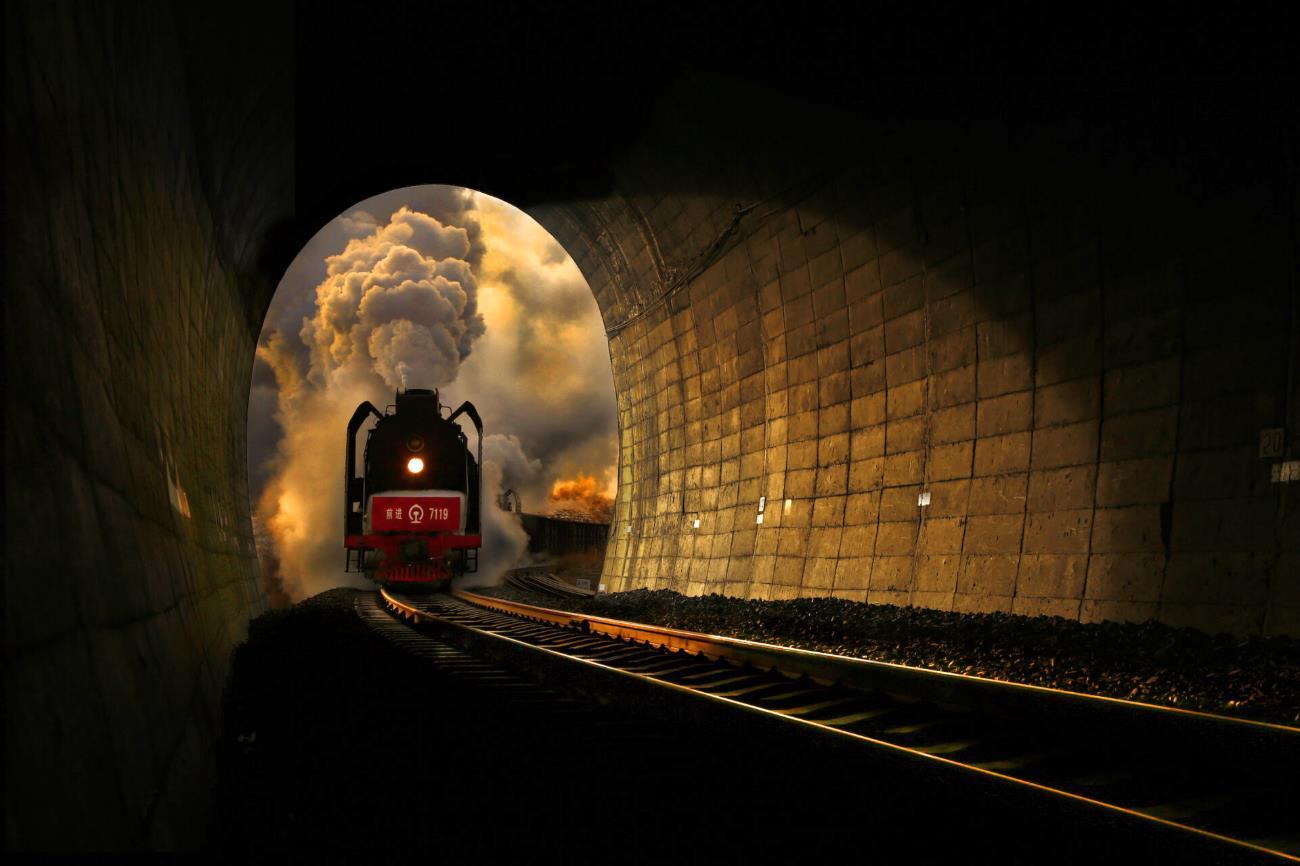 The upstream steam locomotive of the Zalai Nuoer open pit mine. In 2021, the normal operation of steam locomotives in Northeast China officially ended at the Wujiu Coal Mine. Taken in 2009, Zhalai Nuoer, Inner Mongolia.
The upstream steam locomotive of the Zalai Nuoer open pit mine. In 2021, the normal operation of steam locomotives in Northeast China officially ended at the Wujiu Coal Mine. Taken in 2009, Zhalai Nuoer, Inner Mongolia.
A JS steam locomotive pulls a self-tipping car loaded with coal onto the Sandaoling open-pit mine. Taken 2020 Hami, Xinjiang. Some photographers pay the driver 300 yuan to let the driver spray the effect of “fire dragon” when the locomotive passes the camera. This has almost become an underground tourism project in the local area where the locomotive drivers have an income of only about 2,000 yuan. This section of the mine railway has since been removed, and the “Fire Dragon” carnival is now history.

Two steam locomotives push and pull a freight train running on the special railway for Sandaoling Coal Mine at the foot of Tianshan Mountain. Taken in 2010, Hami, Xinjiang






















































































 Chesapeake & Ohio MALLET 1309 – a small Big Boy 2-6-6-2 with impressing figures: 30 metres long; weighing aout 300 tonnes (Loc + tender); 28 tonnes drive axle weight ; 16 tonnes coal and 45000 litre water in tender.
Chesapeake & Ohio MALLET 1309 – a small Big Boy 2-6-6-2 with impressing figures: 30 metres long; weighing aout 300 tonnes (Loc + tender); 28 tonnes drive axle weight ; 16 tonnes coal and 45000 litre water in tender.


 ©Walter Scriptunas II – SWR-ER 03-22
©Walter Scriptunas II – SWR-ER 03-22
 © Mitch Goldman 2015
© Mitch Goldman 2015
 Norfolk and Western 4-8-4 # 611 at Ronks, Pennsylvania, USA. Taken on 8 Oct 2019 at 1/8 of a second for the pan, the rods on the Queen of Steam become nothing more than a blur. Probably my slowest pan speed ever. © Sean Mathews
Norfolk and Western 4-8-4 # 611 at Ronks, Pennsylvania, USA. Taken on 8 Oct 2019 at 1/8 of a second for the pan, the rods on the Queen of Steam become nothing more than a blur. Probably my slowest pan speed ever. © Sean Mathews






































 The upstream steam locomotive of the Zalai Nuoer open pit mine. In 2021, the normal operation of steam locomotives in Northeast China officially ended at the Wujiu Coal Mine. Taken in 2009, Zhalai Nuoer, Inner Mongolia.
The upstream steam locomotive of the Zalai Nuoer open pit mine. In 2021, the normal operation of steam locomotives in Northeast China officially ended at the Wujiu Coal Mine. Taken in 2009, Zhalai Nuoer, Inner Mongolia.

